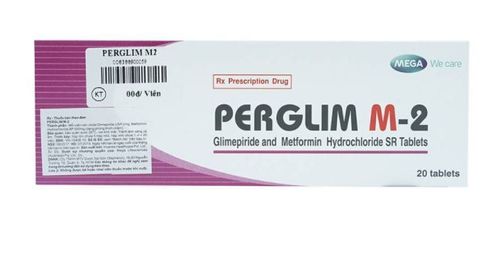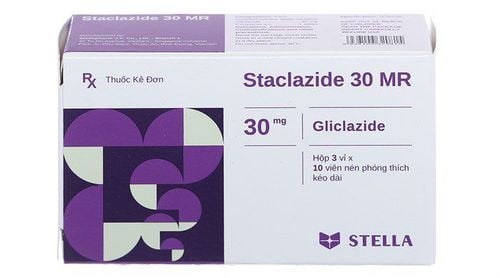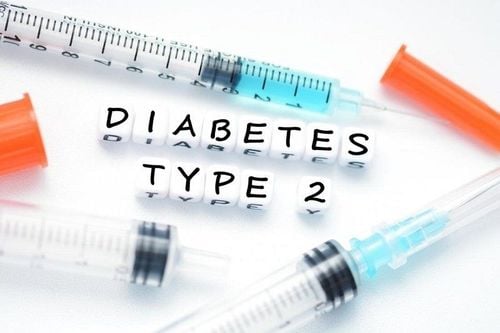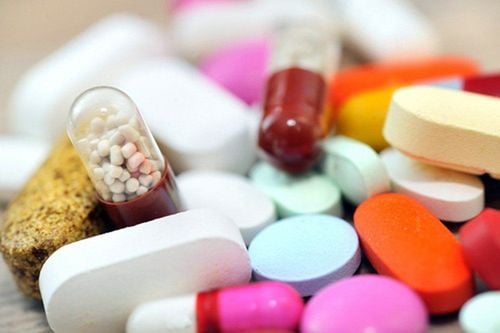This is an automatically translated article.
The percentage of children in Vietnam with diabetes tends to increase and is difficult to treat. Diabetes in children is usually type 1, accounting for about 90% of children with diabetes. The condition is usually genetic, insulin-synthesizing, or insulin-producing disorders, and is congenital in nature.
1. Manifestations of diabetes in children
Diabetes is a carbohydrate metabolism disorder characterized by chronically elevated blood sugar levels due to decreased insulin secretion or insulin function, or both.
Childhood diabetes is often associated with genetic factors and autoimmune inflammation islets of Langerhans of the pancreas, common in 10-14 years old. Diabetes in children is insulin dependent (type 1). Insulin injection therapy is necessary to keep the child alive.
The most common childhood diabetes symptom is sudden and acute onset with polyuria, polydipsia, and metabolic acidosis. The remaining children have diabetes with gradual onset with 4 typical symptoms: peeing a lot, drinking a lot, eating a lot, being thin, losing weight, and tired. If detected late, the child may have symptoms of vision loss or growth retardation, delayed puberty.
Children with diabetes may show 1 or 2 of the 4 typical signs above and in some cases the child has no symptoms at all. Besides, because diabetes is rare in children, it is easy to be confused with some other common diseases that also have some similar symptoms.
Therefore, parents need to pay attention to these symptoms to take their children to the doctor and get treatment in time. Some common symptoms are:
Thirst: Children with diabetes often drink more water than usual and do not feel thirsty. Fatigue: Children often feel tired and this often lasts. Weight loss: Children may lose weight rapidly for no apparent reason. Frequent urination: Older children often use the toilet, while younger children often wet the bed. Newborns may find diapers heavier than usual. Stomachache. Headache. Behaving unusually. Watch now: Children can also get diabetes
2. How is diabetes diagnosed in children?
The diagnosis of diabetes in children as well as in adults is based on tests that evaluate blood sugar. Do blood sugar test at least 2 times or more with blood sugar standards:
Fasting glucose ≥ 7.0 mmol/l HbA1C >7%/ Electrolytes may be normal or changed. Blood gases change when the child has a metabolic acid-base disorder. Test glucose tolerance with a total dose of not more than 75g of glucose. Breastfeeding children: 1-1.5g/kg Older children: 1.75g/kg Give children the amount of glucose according to their weight mixed with 250ml of normal water, drink for 5 minutes. Then do a blood sugar test after drinking 30 minutes, 60 minutes, 120 minutes.
Look for antibodies against pancreatic cells: ICA, GAD, IAA Urine test (+), urinary ketones can be (+) or (-).

Trẻ thường xuyên cảm thấy mệt mỏi khi mắc tiểu đường trẻ em
3. How is diabetes in children treated?
3.1. Drug treatment
Use animal insulin (swine or cow) or human insulin (Human insulin).
Dosage is as follows:
Children: 0.2-0.8 units/kg/day Prepubertal: 0.8-1 units/kg/day Puberty: 1.2-1.5 units/kg/day How to use the injections Insulin during the day:
Inject 2 injections/day with a combination of regular insulin and semi-slow insulin injected before breakfast and in the evening. In some special cases, 3 injections/day may be required. The morning dose will be = 2/3 of the total dose for the day. The afternoon dose will be 1/3 of the total dose for the day. Normal insulin rate is 1/3 and slow insulin is 2/3 per injection.
3.2. Diet
To ensure the development of children, parents should not give children the same diet as adults.
Carbohydrates account for 55-60% of calories in the day. Protein 12-20% of calories for the day. Lipids <30% of calories per day.

Chế độ ăn cần đảm bảo dinh dưỡng khi bé mắc tiểu đường trẻ em
3.3. Monitoring diabetes treatment in children
In the first year, parents need to take their children to a doctor every 3 months and have their blood sugar tested 4 samples a day. From 2 to 5 years, children should be examined periodically every 3-6 months, checked blood sugar 4 times a day, periodically checked HbA1C, blood cholesterol. After 5 years of treatment, take the child to a doctor every 6 months, check blood sugar 4 times a day, periodically check other indicators such as HbA1C, cholesterol, triglycerides, urea, creatinine, microalbuminuria, in addition. Optometry and ophthalmoscopy are required. Parents need to check their children's blood sugar and urine by themselves when they have signs of increased urination or feel tired. Weekly blood sugar test 4 samples/time on weekends.
Watch now: Caring for children with diabetes at schools and kindergartens
4. Prevention of diabetes in children
To prevent diabetes in children, you need to build a reasonable diet for children as follows:
Limit sweets, foods high in fat such as: Fast foods, fried foods , egg yolks, fatty meat, viscera of animals,... Enhance green vegetables, fiber, fruits, protein for children. Encourage children to be active, participate in fun activities, practice outdoor sports such as jogging, soccer, volleyball, basketball... Diabetes can be encountered in children and causes dangerous complications, requiring the whole family's efforts in treatment. Therefore, when detecting that a child shows signs of illness, parents need to take the child to medical centers for timely examination and treatment.
With many years of experience in examining and treating diseases in children, now the Pediatrics Department at Vinmec International General Hospital has become one of the major health care centers, capable of examining , screening and treatment of many specialized diseases in children. Therefore, if a child shows signs of type 1 diabetes, parents can take the child to Vinmec International General Hospital for examination and receive support and advice from doctors and nutritionists. .
Please dial HOTLINE for more information or register for an appointment HERE. Download MyVinmec app to make appointments faster and to manage your bookings easily.













